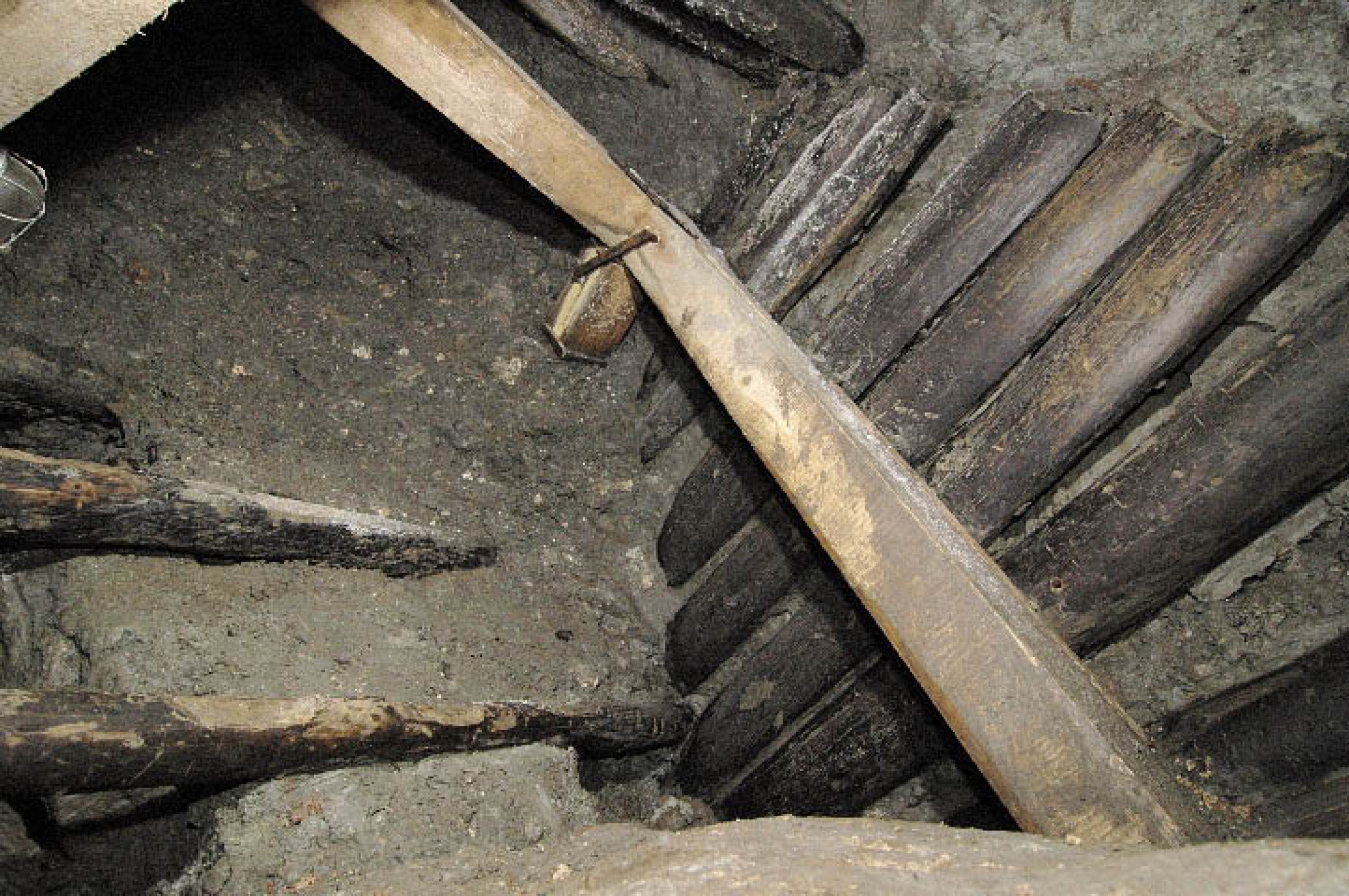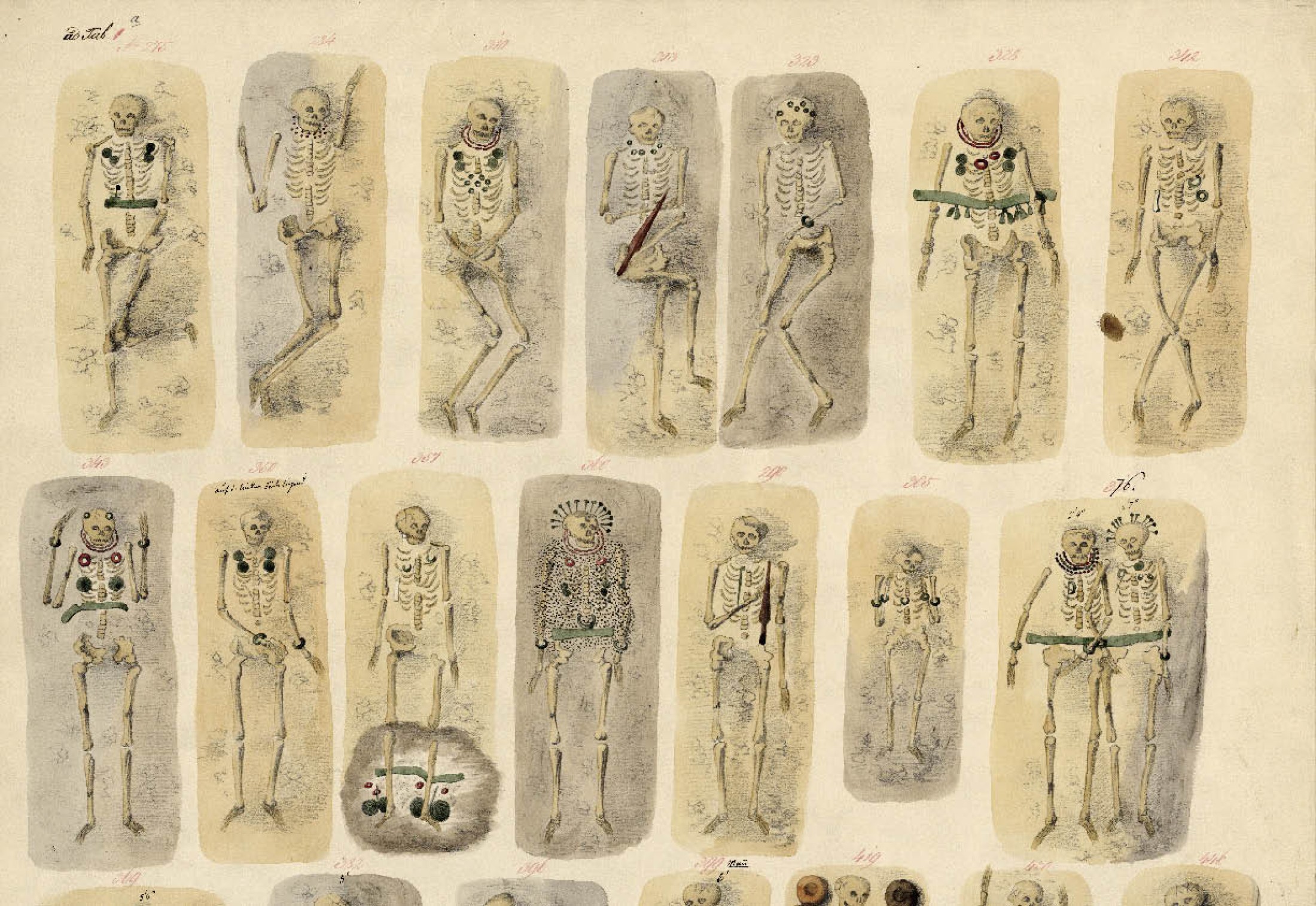The Hallstatt Period
Burial gifts from the famous burial site and prehistoric mining objects dating back to the Hallstatt Period (around 800 to 400 BC) have been preserved. So far, no remains of settlements from this period have been found near the mine or in the valley. The items from this period show very close links to burial sites in the village of Traunkirchen, around 20km from Hallstatt. This may be evidence that Traunkirchen served as a trading hub where salt mined in Hallstatt would have been sold.General information on the Hallstatt Period
The Hallstatt Period burial site
Mining in the Hallstatt Period
Siedlung der Hallstattzeit
General information on the Hallstatt Period
After the Stone Age and the Bronze Age, the Iron Age is the third and last great prehistoric epoch. In Central Europe, the earlier part of the Iron Age is termed the Hallstatt Culture after the world-famous cemetery in the Hallstatt High Valley, deep in the Austrian Salzkammergut. The adoption of the new material, iron, resulted, from the 9th century BC onwards, in radical social changes all over Europe and thus also in Hallstatt. There were clear trends towards a concentration of economic and political power, and a new and marked social stratification. To a larger extent than before, cultural stimuli from the South and East brought new ideas and lifestyle patterns to Central Europe.The Hallstatt Period burial site
The burial site in Hallstatt dating back to the Hallstatt Period is among the most important archaeological sites in the world. Its graves from between 800 and 400 BC contain precious items from throughout Europe, indicating that the inhabitants of Hallstatt had an extensive network of contacts. A large number of the graves were excavated in the 19th century by a team led by Georg Ramsauer. Ramsauer’s documentation of the Hallstatt burial site is among the finest from the early period of archaeological research. Nevertheless, these records do not meet the standards of modern research, which uses much more advanced techniques and methods than those available to Ramsauer and his team at the time. Latest research indicates that between 5000 and 6000 bodies were buried at this site.Mining in the Hallstatt Period
The wealth of the community in Hallstatt was based on a rich supply of salt. This was mined in later years using a different method and sold in the form of salt bars. The mines of Hallstatt are a treasure trove for archaeologists researching the Hallstatt Period.Many organic objects from the Neolithic Age and the Bronze Age have been preserved in the moist ground near former settlements as well as in burial sites where tree-coffins were used. However, living habits and burial customs changed in the Hallstatt Period. Therefore, the objects of this kind dating back to the Hallstatt Period found in Hallstatt mines are of huge importance to the archaeological research community.
Hallstatt Period settlements
To date, no settlement from the Hallstatt Period has been found. There is evidence that a large settlement – almost certainly
the one connected to the burial site – in the Salzbergtal valley was covered by a major landslide around 350 BC. Pottery
from the Hallstatt Period and the maintenance work the mines would have required mean it is likely that there was a permanent
human presence on site. Current research does not make it possible to establish whether or not there was a settlement next
to the lake during this period. However, a few items of pottery indicating settlement have been found on the shores of the
lake.(Loew, C. – Reschreiter, H.)



